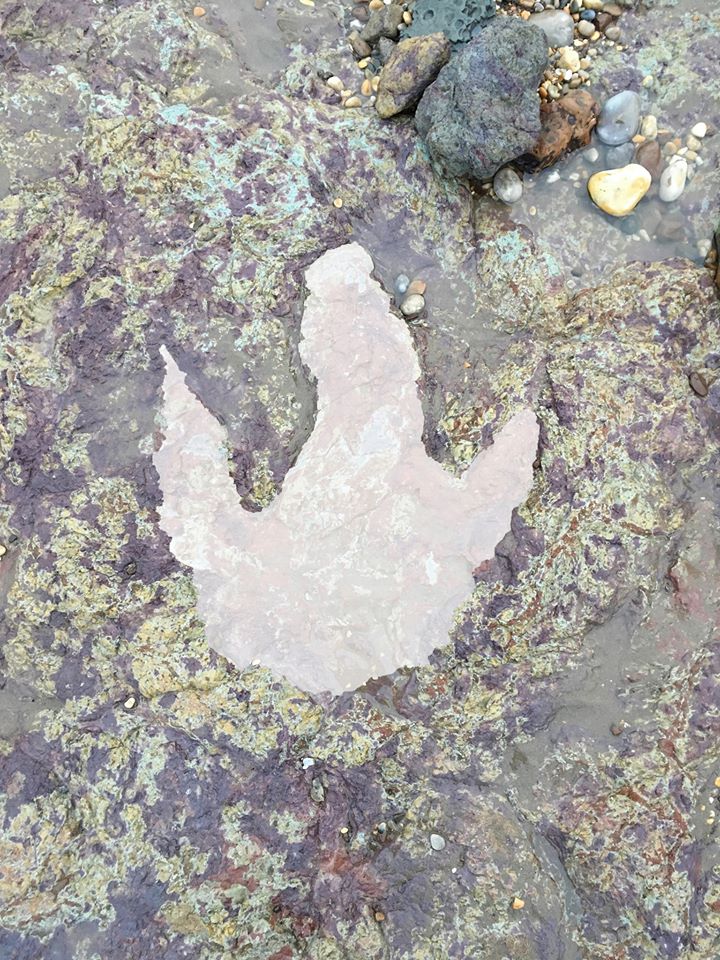
Storm Ciara Reveals 130 Million-Year-Old Dinosaur Footprint
There is no denying that Storm Ciara caused a lot of damage when it hit the United Kingdom last week, but the massive storm also helped reveal a 130 Million-Year-Old Dinosaur Footprint.
According to experts, the strong winds of Storm Ciara revealed the footprint of a dinosaur that once roamed our planet at around 130 million years ago.
The large claw-like print was revealed on a beach on the Isle of Wight.

Fossil experts believe that footprint belonged to an ancient theropod dinosaur, which is known as a Neovenator or a Spinosaurus Baryonyx.
The Neovenator means “new hunter”. These types of dinosaurs measured around 7.6 meters long and could weigh up to a whopping 2 tons.
On the other hand, the Spinosaurus Baryonyx was in the same family, but it mostly ate fish.
The discovery was made by the Wight Coast Fossils Group in the coastal area of Sandown.
The Wight Coast Fossils Group shared the images of the dinosaur footprint on Facebook and tried to explain the discovery to its viewers.


The group said, “The pointed toes of this track may indicate a large theropod, perhaps Neovenator or the Spinosaur Baryonyx. The mottled clays the footprint is preserved in are a paleosol, an ancient soil horizon, representing an area of boggy overbank marshland that seasonally dried and flooded.”
They added, “Our track maker was crossing this environment 130 million years ago, heading southwest in what is now Sandown Bay, leaving these huge tracks in the boggy soil. Behind the animal lay a range of low forested hills, while ahead lay a flat floodplain landscape dotted with floodplain forests, river channels, and herds of herbivorous dinosaurs.”
They continued, “Clay footprints such as these can be relatively common in our Wessex Formation exposures, but do not hold up to the forces of erosion for long. Sadly they will typically disappear in a couple of days or weeks, as the tide wears down the soft clays of the Wessex Formation, an awesome but fleeting glimpse of a time long gone, lying in plain sight on our coastline!”

The footprint that was recently discovered can disappear as the tides of the beach may wash over the soft clay.
But the good news is that the group managed to snap some photographs of the massive 130 million-year-old dinosaur footprint.